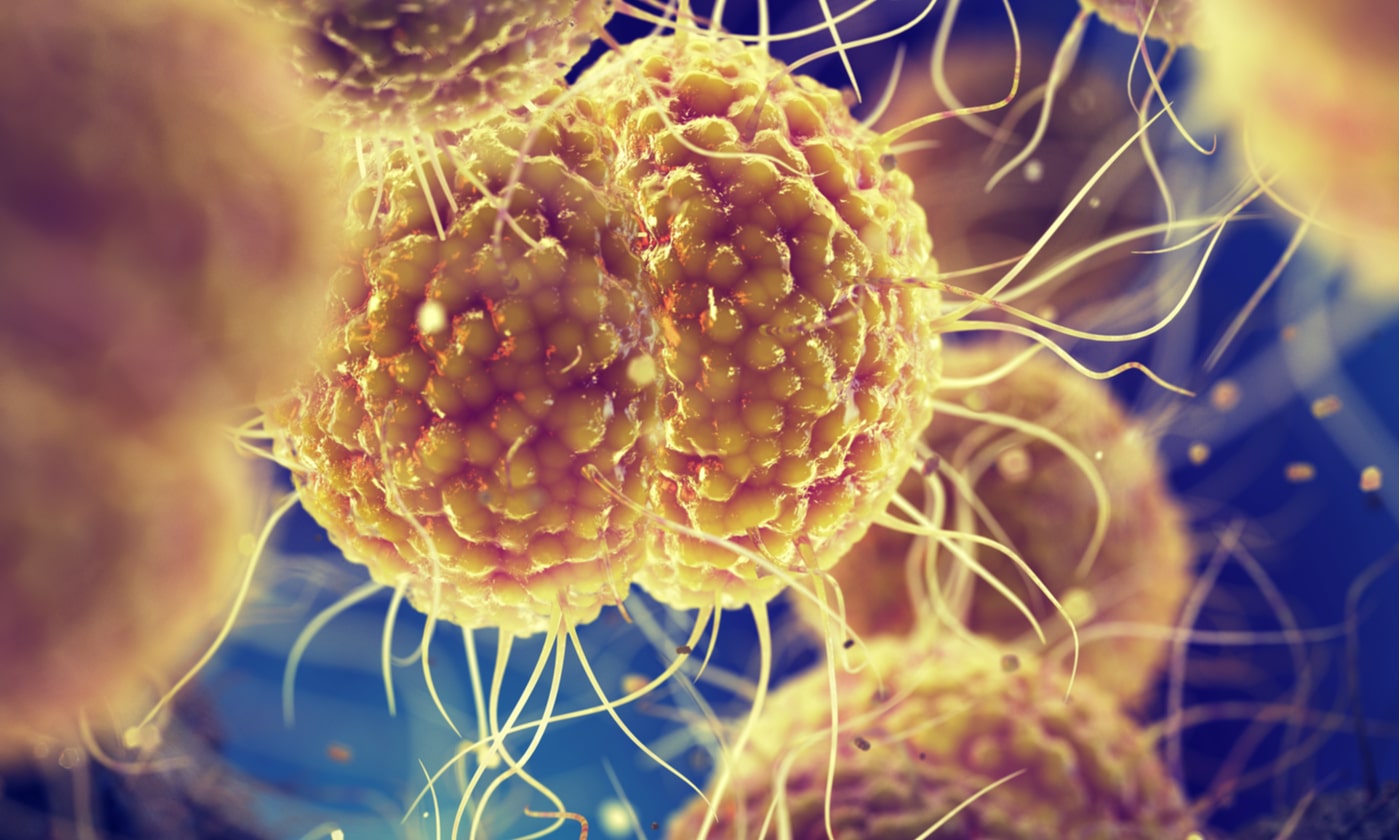What is gonorrhea?
Gonorrhea is a common sexually transmitted disease (STD) that is spread through sexual contact with the penis, vagina, mouth, or anus of an infected individual. Gonorrhea can also be transmitted from a mother with an untreated cervical infection to her newborn during childbirth (1).
What causes gonorrhea?
Gonorrhea is caused by infection with the bacterium Neisseria gonorrhoeae.
What are the symptoms of gonorrhea?
Males may exhibit symptoms of a gonorrheal infection; however, most infected females remain asymptomatic, with an estimated 85-90% of infected males showing symptoms and only ~20% of infected females (2) If symptoms occur, it’s usually 1-3 weeks after exposure. Symptoms can include:
- Abnormal vaginal discharge
- Bleeding between periods and/or after sexual intercourse
- Increased urinary frequency
- Dysuria – painful urination
- Pain during sexual intercourse
- Abdominal and/or pelvic pain
- Urethral discharge
- Testicular pain
- Burning or itching in the urethra
Gonorrhea can also affect the rectum, resulting in rectal pain, discharge, and bleeding (3), and the throat, which may cause a sore throat (4).
Who is at risk of gonorrhea?
Any sexually active individual is at risk of gonorrheal infection, with an increased risk among younger individuals. Gonorrhea is a common STD in the United States with 583,405 cases reported to the CDC in 2018 (5).
How is gonorrhea diagnosed?
Modern nucleic acid amplification testing (NAAT) provides the most sensitivity and specificity for a gonorrheal diagnosis. These can be performed on vaginal swabs (either clinician- or patient-collected) or urine.
How is gonorrhea treated?
Dual antibiotic treatment was previously recommended for gonorrhea infections due to antimicrobial resistance (6). However, due to other health concerns, now only ceftriaxone is recommended for treating gonorrhea in the United States (7). Repeat gonorrheal infections from sexual contact with an infected partner are common, increasing the risk of serious reproductive health complications. Antibiotics do not repair any permanent damage done by the disease (6).
References:
1. Sexually Transmitted Disease Surveillance, 2018. CDC. October 2019.
2. Gonorrhea Gonococcal Infection (clap, drip). New York State Department of Health. November 2006.
3. Klein EJ, et al. (1977). Anorectal gonococcal infection. Ann Intern Med, 86 (3), 340-346.
4. Wiesner PJ, et al. (1973). Clinical Spectrum of Pharyngeal Gonococcal Infection. N Engl J Med, 288 (4), 181-185.
5. Sexually transmitted Disease Surveillance 2018, Gonorrhea. CDC October 2019.
6. Workowski KA & Bolan GA (2015) Sexually Transmitted Diseases Treatment Guidelines, 2015. MMWR Recomm Rep, 64 (RR-03), 1-137.
7. Gonococcal Infections Among Adolescents and Adults. Sexually Transmitted Infections Treatment Guidelines, 2021. (Reviewed July 2021).CDC.



